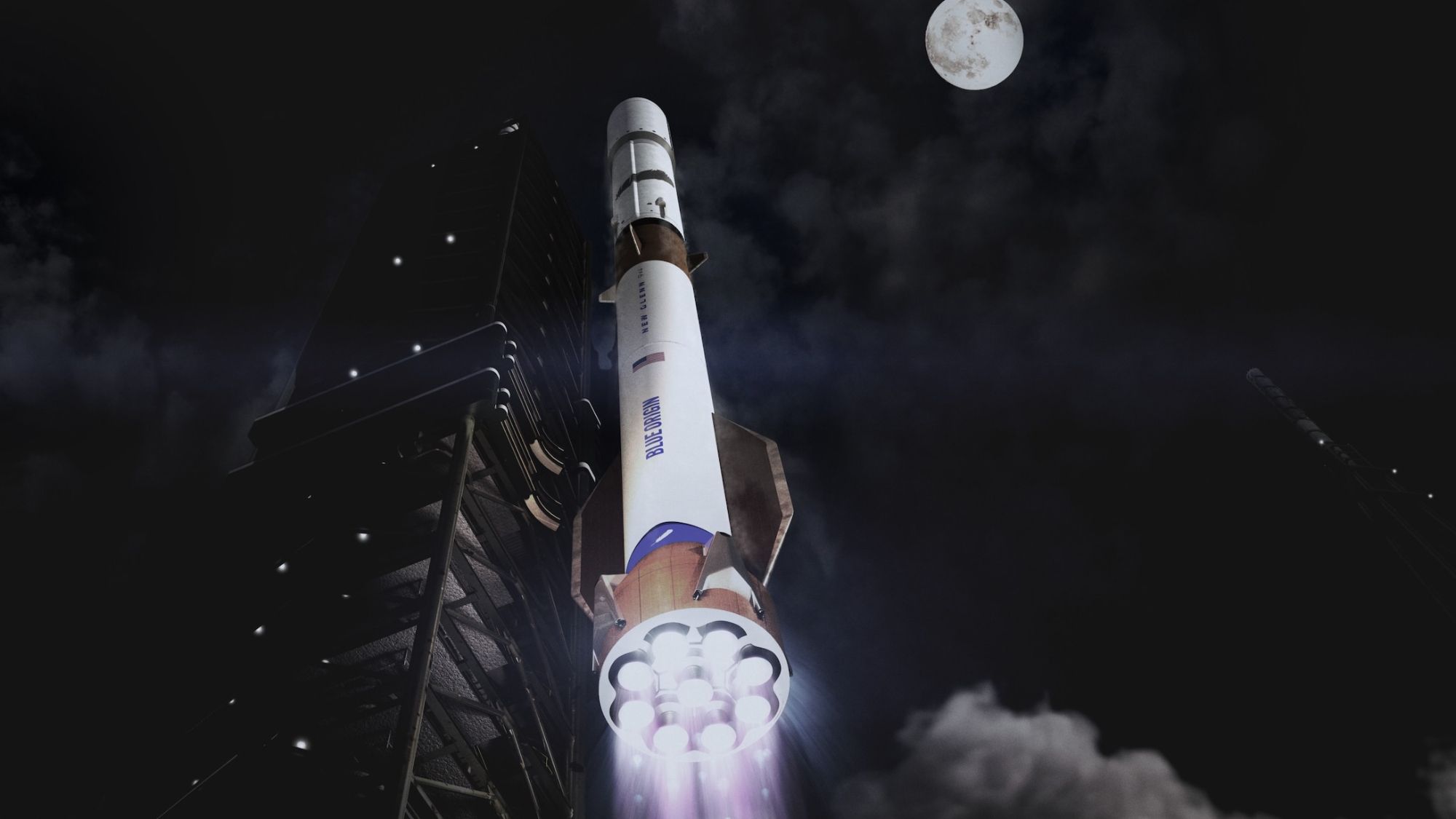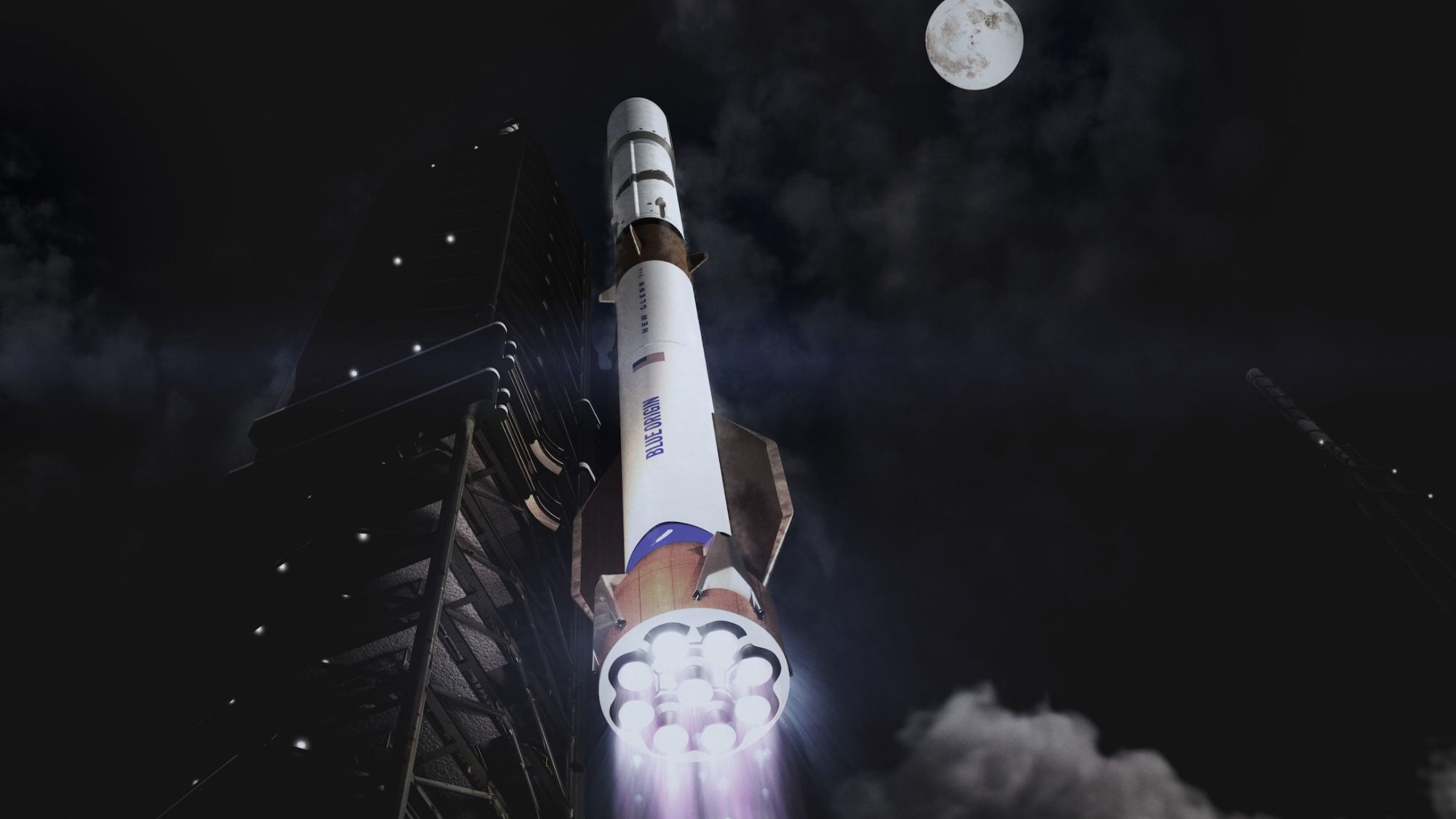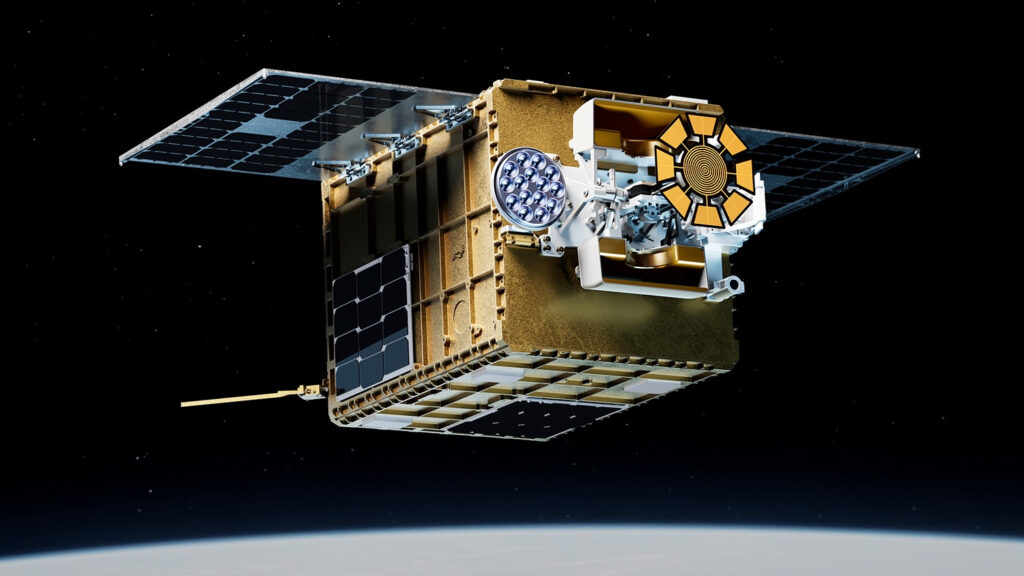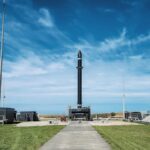Now Reading: Jeff Bezos’ Blue Origin will build a ‘super heavy’ version of its powerful New Glenn rocket
-
01
Jeff Bezos’ Blue Origin will build a ‘super heavy’ version of its powerful New Glenn rocket
Jeff Bezos’ Blue Origin will build a ‘super heavy’ version of its powerful New Glenn rocket


Blue Origin’s New Glenn rocket is getting even more powerful.
Jeff Bezos‘ spaceflight company announced today (Nov. 20) that it’s upgrading New Glenn, a partially reusable heavy lifter that aced its second-ever mission just last week. On that flight, New Glenn sent NASA’s twin ESCAPADE Mars probes on their desired trajectory, and the rocket’s first stage landed successfully on a ship at sea.
New Glenn’s reusable first stage is powered by seven of Blue Origin’s BE-4 engines, and its second stage features two BE-3Us. According to the update, both of these engines are getting an upgrade, which will boost the first stage’s thrust from 3.9 million to 4.5 million pounds per foot (17,219 to 19,928 kilonewtons) and the upper stage’s from 320,000 to 400,000 pounds per foot (1,423 to 1,779 kN).
“Additional vehicle upgrades include a reusable fairing to support increased flight rates, an updated lower-cost tank design and a higher-performing and reusable thermal protection system to improve turnaround time,” Blue Origin said.
Today’s update also includes some even bigger news: Blue Origin plans to build a “super-heavy” version of the rocket, which it calls New Glenn 9×4. The name is a nod to the increased number of engines — nine BE-4s on the first stage and four BE-3Us up top.
New Glenn 9×4 will be capable of lofting 77 tons (70 metric tons) of payload to low Earth orbit, compared to 50 tons (45 mt) for the original “7×2” variant. The new rocket will also have an even bigger payload fairing — one that’s 28.5 feet (8.7 meters) wide, compared to an initial 23 feet (7 m).
That baseline 23-foot-wide fairing was already a space industry standout. For example, the payload fairing of SpaceX’s Falcon Heavy rocket is 17 feet (5.2 m) across.
Today’s update doesn’t give a timeline for the development of New Glenn 9×4 (which could really use a catchier name). But it does stress that the new rocket won’t displace its older cousin.
Both New Glenn variants “will serve the market concurrently, giving customers more launch options for their missions, including megaconstellations, lunar and deep-space exploration, and national security imperatives such as Golden Dome,” Blue Origin wrote.
Stay Informed With the Latest & Most Important News
Previous Post
Next Post
-
 012024 in Review: Highlights from NASA in Silicon Valley
012024 in Review: Highlights from NASA in Silicon Valley -
 02Panasonic Leica Summilux DG 15mm f/1.7 ASPH review
02Panasonic Leica Summilux DG 15mm f/1.7 ASPH review -
 03From Polymerization-Enabled Folding and Assembly to Chemical Evolution: Key Processes for Emergence of Functional Polymers in the Origin of Life
03From Polymerization-Enabled Folding and Assembly to Chemical Evolution: Key Processes for Emergence of Functional Polymers in the Origin of Life -
 04How New NASA, India Earth Satellite NISAR Will See Earth
04How New NASA, India Earth Satellite NISAR Will See Earth -
 05And Thus Begins A New Year For Life On Earth
05And Thus Begins A New Year For Life On Earth -
 06Astronomy Activation Ambassadors: A New Era
06Astronomy Activation Ambassadors: A New Era -
07SpaceX launch surge helps set new global launch record in 2024




















